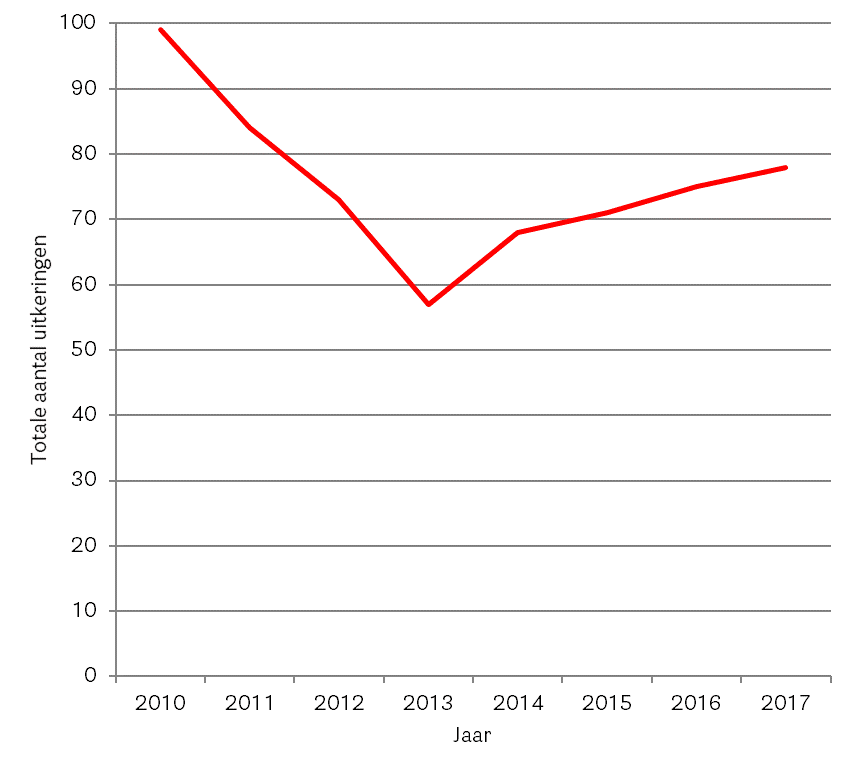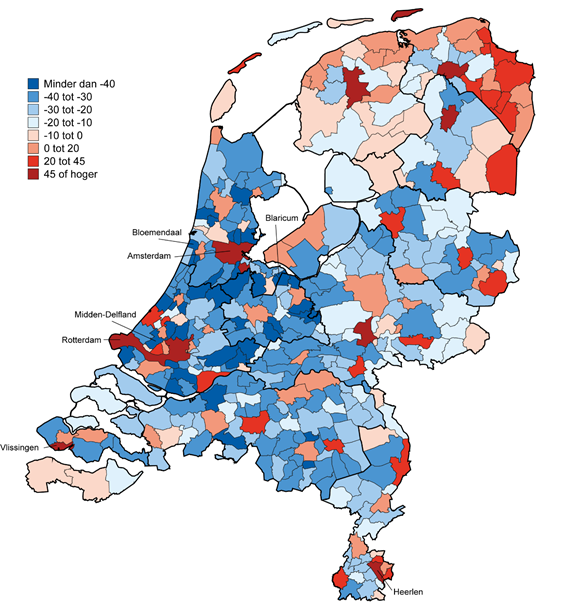Bloemendaal krijgt €953 per inwoner van rijksoverheid, Heerlen €3.465
Gemiddeld ontvangen gemeenten per inwoner €1.947 van de rijksoverheid om hun taken uit te voeren. Maar de ene gemeente krijgt veel meer dan de andere. Heerlen ontvangt per inwoner het meest: €3.468. Ook Vlissingen en Rotterdam worden goed bedeeld. Daartegenover staan Bloemendaal, Midden-Delfland en Blaricum, die minder dan €1.000 per inwoner ontvangen. Dit blijkt uit de nieuwe Atlas rijksuitkeringen aan gemeenten 2017 die vandaag door het Centrum voor Onderzoek van de Economie van de Lagere Overheden (COELO) van de RUG is gepubliceerd.
De zwakke sociale structuur en de centrumfuncties van Heerlen, Vlissingen en Rotterdam zorgen voor hogere kosten. Ook zijn de huizen er relatief weinig waard, zodat de onroerendezaakbelasting minder opbrengt. Vandaar het hoge uitkeringsbedrag. Grotere gemeenten en gemeenten in Noord-Nederland krijgen naar verhouding veel geld van het Rijk (zie kaart onderaan). Van welvarende gemeenten als Bloemendaal, Midden-Delfland en Blaricum verwacht het Rijk dat zij weinig kosten hebben en dat zij zelf meer geld kunnen binnenhalen via de lokale belasting.
Als burger kom je er moeilijk achter hoeveel geld je gemeente van de rijksoverheid ontvangt. Op www.coelo.nl is dit nu overzichtelijk in kaart gebracht.
Tientallen rijksuitkeringen
Gemiddeld dekken gemeenten maar 17 procent van hun uitgaven uit lokale heffingen. Het Rijk is met circa 60 procent de belangrijkste financier. Gemeenten ontvangen €34 miljard via 78 verschillende rijksuitkeringen. Ruim zes miljard euro komt binnen via 16 specifieke uitkeringen (geoormerkt voor bepaalde uitgaven) en 28 miljard euro via het gemeentefonds (vrij besteedbaar). De algemene uitkering (€15 miljard) en de uitkering sociaal domein (€10 miljard) zijn de grootste gemeentefondsuitkeringen.
Aantal rijksuitkeringen groeit weer
Naast die twee grote uitbetalingen worden via het gemeentefonds nog 60 kleinere uitkeringen verstrekt, soms maar aan één enkele gemeente. Jarenlang is het totaal aan verschillende rijksuitkeringen gedaald, van vele honderden tot 57 in 2013. Dat betekende niet dat gemeenten minder geld ontvingen, maar dat ze dit geld kregen via minder verschillende potjes. Dat was overzichtelijker en leverde minder rompslomp op. Opmerkelijk genoeg groeit het aantal uitkeringen sindsdien weer, tot 78 in 2017 (zie grafiek). Dit terwijl de rijksoverheid (nog steeds) streeft naar meer eenvoud en transparantie.

Leesvoorbeeld: Amsterdam en Rotterdam ontvangen van het Rijk per inwoner meer dan 45% meer dan het landelijke gemiddelde. Bedragen per gemeente staan op coelo.nl

Meer informatie
- Prof. Maarten Allers, hoogleraar economie van decentrale overheden, tel. 050-3633745, e-mail coelo rug.nl. Voor bedragen per gemeente zie www.coelo.nl.
- Publicatie: L.A. Toolsema en M.A. Allers, Atlas rijksuitkeringen aan gemeenten 2017. COELO, Groningen, 2018.
Meer nieuws
-
10 november 2025
Decentralisatie van de jeugdzorg
-
31 oktober 2025
RUG speelt sleutelrol in circulair textielproject SORTED
